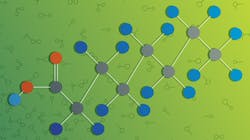WEF, partners explore option to destroy PFAS with heat
The Water Environment Federation (WEF) has partnered with a multidisciplinary research team to study the effectiveness of destroying per- and polyfluoroalkyl substances (PFAS) using pyrolysis followed by thermal oxidation to support the beneficial reuse of biosolids.
With contributions from supporting utilities and technology providers, the $500,000 study will be led by principal investigators Lloyd Winchell (Brown and Caldwell), Franco Berruti (Western University), and Detlef Knappe (North Carolina State University).
“The water and wastewater industry urgently needs a solution to stop the cycling of PFAS in the environment,” said Winchell. “This groundbreaking research will use state-of-the-art analytical methods to address this complex issue and fill a critical gap in the ever-changing PFAS landscape.”
Pyrolysis – the chemical decomposition of organic materials via heat application – produces valuable biochar and fuel-rich offgas. By using thermal oxidation, the offgas can be reused as the heat source for pyrolysis or to generate power. In tandem, these processes can potentially destroy PFAS to alleviate concerns with biochar reuse or air emissions.
The research will evaluate PFAS destruction through a laboratory and full-scale pyrolysis and thermal oxidation system, striving for a fluorine mass balance to understand the fate of PFAS through the process.
PFAS are a complex group of manufactured chemicals found in consumer and industrial products. Deemed “forever chemicals” for their ability to remain intact in the environment over time, PFAS have been detected in soil, air, and water and can be harmful to human health.
Wastewater utilities face regulatory uncertainty over the release of PFAS to the environment, including via biosolids. Biosolids are a product of the wastewater treatment process where solids and liquids are separated. The solids are treated physically and chemically to produce nutrient-rich biosolids. Decades of research has demonstrated that biosolids offer essential plant nutrients, increase water retention for plant growth, and build carbon reserves in the soil. Many utilities are contemplating new ways to eliminate PFAS from biosolids to ensure regulatory compliance and to continue the many beneficial uses for the resource.
“It is vital for economic and environmental sustainability that communities across the country are able to use biosolids for their many benefits and that this valuable resource is not just sent to fill up landfills,” says Walt Marlow, WEF’s executive director. “The water sector has always used the best science to guide our work and this research to explore destruction of PFAS is part of that commitment.”
Following an 18-month research period involving sampling, laboratory experiments, and analysis, a final report with findings and full-scale pyrolysis recommendations will be published by WEF.
